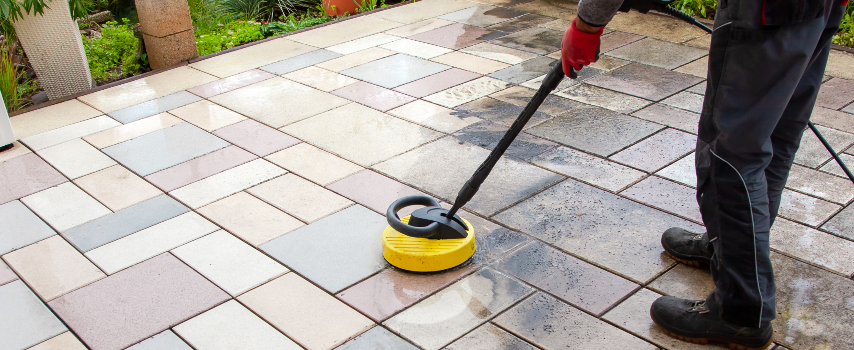
Even though we’re now well into December, winter is just unfolding its wintry magic! As the season settles in, those gentle breezes turn into brisk chills, and rain showers start pouring down heavier and more frequently.
These shifts bring a new set of challenges for your Indian sandstone paving. With the changing weather patterns, it's essential to equip your paving with proper care and protection to safeguard it from potential harm. Ignoring or not addressing these needs during this colder season risks damaging the appearance of your outdoor space and poses safety concerns for you and your family. So, here are some quick tips you can use to make sure that's never the case for your paving.
A sealed patio is a stunning patio
Sealing your Indian sandstone paving protects it against harsh weather. This protective measure serves as a barrier, warding off potential water damage by preventing moisture from penetrating the stone. With freezing temperatures, water seeping into the stone and then expanding can lead to cracks and structural damage. What's more, sealing minimises staining from snow, ice, or water, which helps to preserve the pristine appearance of the paving.
By fortifying the surface against frost and moisture, the sealant enhances durability and extends the overall lifespan of the paving, maintaining its structural integrity. Additionally, a sealed surface facilitates easier maintenance by curbing the growth of moss, algae, or mould, reducing the need for frequent cleaning and upkeep during the winter months.
Keep your slabs sparkling
As the weather gets wetter, keep your eye out for any unwanted growth, including weeds, that require trimming; you don't want to leave them encroaching on your patio. Once you've gotten rid of pesky weeds, sweep your patio using a stiff but soft yard brush to eliminate any dirt or debris that could lead to mould, moss or fungus during winter. Leaving any mould, moss, or even a pile of decomposing leaves on your Indian sandstone can rustle in unsightly stains that'll become incredibly difficult to get out come spring, so prevention is the best solution!
If you find some slight discolouration, after ridding your flagstones of any debris, now is the time to get to work with the soap. If you’re planning on using your power washer here, at the bare minimum you’ll need to ensure you’re holding the nozzle at least one foot away from the patio surface to prevent any potential damage. To be honest though, we don’t recommend using a power washer on your Indian sandstone paving in the first place, as it can damage and chip the surface if the pressure is too high. Especially since it might inadvertently dislodge sealers or jointing materials between the stones. Instead, opt for a soft bristle brush and some warm, mild, soapy water; this should do just the trick without any unnecessary damage.
Avoid any harsh chemicals at all costs
Would and debris isn’t the only thing that will stain your paving! Mild soap is a safer and more suitable option for cleaning the surface of your stones, preventing potential staining or damage caused by harsh chemicals. By steering clear of abrasive substances and opting for gentler cleaning agents, you can maintain the natural beauty and quality of your paving without risking any unintended harm or discolouration.
These are just a few of our suggestions - if you’ve got any questions or you need any more in-depth advice about your own patio, don’t hesitate to ask! You can email us on salesoffice@stonepaving.co.uk, or give us a call on 01282 860 571, and one of our friendly members of staff will be only too happy to help. And if you need any replacement Indian sandstone slabs, we’ve got no shortage to choose from right here on our site, from our Kandla Grey to Golden Leaf.

